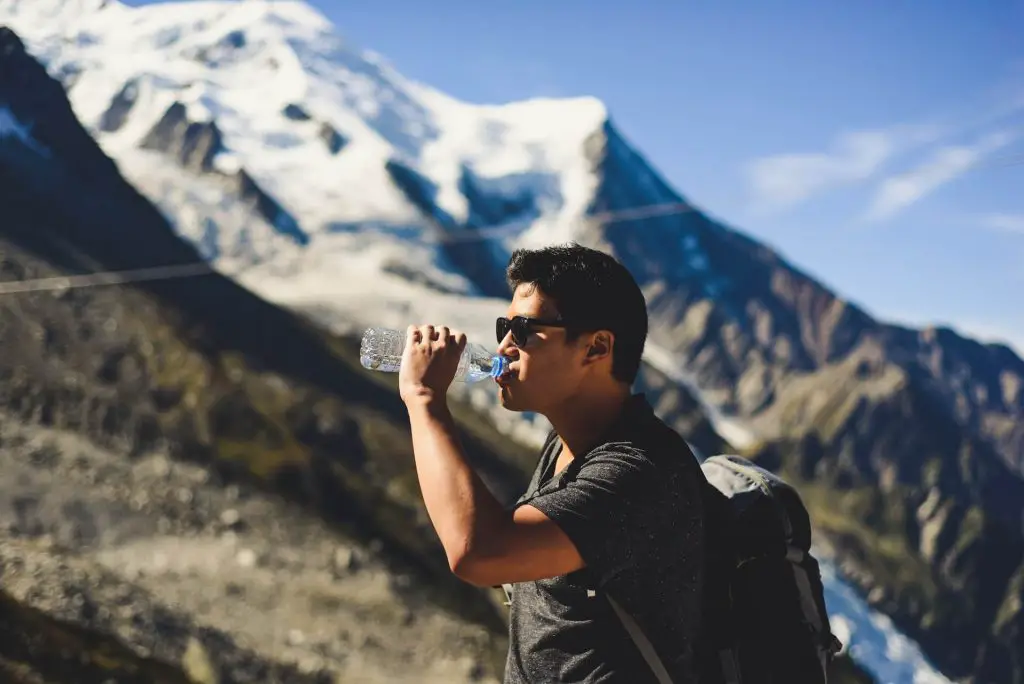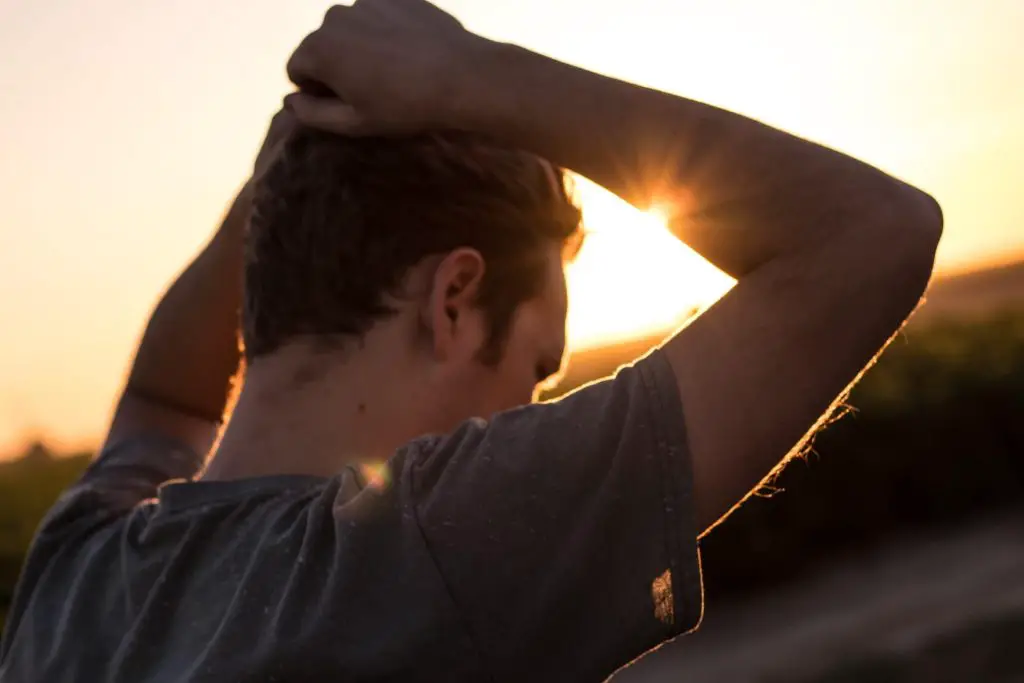
You are heading out on a hike and you don’t want to bring too much water but you also don’t want to bring too little. Carrying unnecessary weight or the worry of not having enough water can be frustrating. How much water do you need to bring for a 1 mile hike?
The general rule of thumb is to drink half a liter or the typical 16.9 ounce bottle of water per hour, so for the average person who hikes two miles an hour you only need to bring one 16.9 ounce bottle of water. You may need to drink more or less depending on your fitness level, how thirsty you get, weather conditions, and trail difficulty.
Having enough water on the trail is very important to ensure you are properly hydrated, so its always better to have more water than you need. A little extra weight will go a long way for your hydration. There have been some times in the past where I didn’t carry enough water and had to ration my remaining water. There have also been times where I had half of my hydration bladder remaining and brought way too much. Start off with bringing more than enough water and adjust as you learn your water habits and needs. There are a few factors you should think about to help you determine how much water to bring.
How to Determine How Much Water to Bring

Fitness Level
Only you know your fitness level, so its important to give an honest assessment. When you research trail information online or see signage at the trailhead with the estimated duration of a hike, those are just average estimates. You could hike slower or faster than the estimate. For your one mile hike you can start off by estimating it will take you 45 minutes, which is slightly a slower pace than the average hiker which take around 30 minutes for a mile.
As you hike more hikes you can time yourself and see how long you are take to hike one mile on average over different terrain and trails. Your fitness level will improve with each hike you do and this will help you determine how much water you actually need. If you are earlier in your hiking fitness journey then opt to bring more water than you think you need so you can stop and take more drinks of water.
Thirst
The next major factor that most sites don’t talk about is how thirsty you get. Some people just drink more water than others despite fitness level, weather, and the trail. I have a friend who drinks a massive amount of water every hike we go on, it does not matter how easy or difficult the hike is. Drinking more water than the average estimate is totally okay, as long as you are hydrated. Be careful though to not over hydrate as this can cause hyponatremia. Though this is very rare and usually only occurs for long distance endurance events such as marathons or triathalons.
If you notice you are drinking a lot of water then carry 50% more than you think you need. For your one mile hike bring a bottle and a half of water so that you can quench your thirst and stay hydrated during your hike. If you want to carry more water then my go-to has been a hydration bladder. It makes it easy to carry a lot of cold water and its much more convenient to drink from than a bottle.
Platypus Big Zip EVO Hydration Bladder on Amazon
Weather
A major factor you should always think about before any hike is what the weather is going to be. The weather is going to dictate how fast or slow you move and how early you should hike. For colder days you will likely only need to bring the average amount of water. In this case just one 16.9 ounce bottle of water should be sufficient for a one mile hike.
However, on hotter days you will need to bring more water due to excess sweat and physical exertion. The heat will make you want to drink more water to stay cooler. There are ways you can keep your water cool on your hike so you feel refreshed on a hot day. For a hot day for a one mile hike you should bring at least one and a half 16.9 ounce bottles. You should also be eating salty snacks or something like a Gatorade to help with loss of body salt from sweating in the heat.
Elevation Gain
The next major factor to think about is how difficult the trail will be. The difficulty will be determined by the terrain and how much elevation gain you will experience. A steep one mile hike with 1000 feet of elevation gain will be much more challenging than a flat5 mile hike with no elevation gain. The strain caused in your legs due to the steep slopes of a high elevation hike will cause your body to work harder and need more water.
You can see trail difficulty on most sites with ratings from easy, moderate, strenuous, and very strenuous. The difficulty rating is usually always referencing how steep and how much elevation gain a hike has. For easy and moderate hikes you can probably just bring the average amount of water. For an easy or moderate one mile hike you can bring the small 16.9 ounce bottle of water. For strenuous to very strenuous one mile hikes you should probably bring at least one and a half bottles of water.
Shade
Another thing to consider is the amount of shade on a trail. Even if the weather forecast says 74 degrees, you can feel even hotter if your one mile trail has no shade. If you are hiking in a desert environment or in a mountain area then you should be mindful of very little shade. You can find trail reviews on alltrails.com and see if people mention there being a lack of shade.
For hikes with little shade you should bring a hiking hat and UPF long sleeve to block your body from the sun. This will help you stay cooler and keep the heat off. Again one and a half bottles of water should be good enough for a one mile hike with no shade. The hat and long sleeve will help in staying cool. Having the hot sun beating down on your head is no fun, so a hat is important.
Sun Cube Hiking Hat with Neck Cover on Amazon
Columbia Long Sleeve UPF Shirts on Amazon
How Often and How Much Water Should You Be Drinking?

Starting Off
To start off I would take a drink of water every 15-20 minutes. That may be too much if you aren’t much of a drinker and too little if you are very thirsty. You can adjust this as you go on more hikes. A few sips of water every 15-20 minutes should be enough to keep you properly hydrated. As you go on more trips you will learn about how frequent you need water, this will change as your hikes and the weather differ.
Thirst
You might be a thirsty drinker and need a lot of water, but if you aren’t then a good way to measure if you should be drinking is if your mouth starts to feel dry. This is a sign to take a few sips of water. You want to maintain moisture in your mouth so you do not get dehydrated. If you are someone like me who drinks infrequently then you should just try to take a few sips of water every 20-30 minutes. I tend to not think about drinking water and get in the zone of hiking, but drinking based on time instead of thirst helps me.
Water Levels
As you are hiking you should check how much water is left so you can ration your water evenly throughout your hike. You don’t want to be caught in the scenario where you have a mile left on our hike and you have no more water remaining. For shorter hikers I typically check every 30 minutes if I feel like I have been drinking a lot of water. For longer hikes, I tend to carry extra water and so I check once every hour or two.
Final Thoughts
The concerns of how much water to bring on a one mile hike are valid. Carry too much and you have a heavy pack, but carrying too little and you’re left scrambling to return to your car with no water. A typical 16.9 ounce bottle of water is enough for most hikers, but now we know there are a number of factors that can determine if you should bring more. Trail difficulty, weather, shade, your fitness level, and your thirst level will help you determine the extra amount of water you need.
Since every body is different and each trail is different you will need to learn through trial and error how much is enough. Now you know the major factors to consider before you step foot on the trail so you can be confident you have brought enough water to keep you fully hydrated and energized on your next trip. Enjoy your one mile hike!

